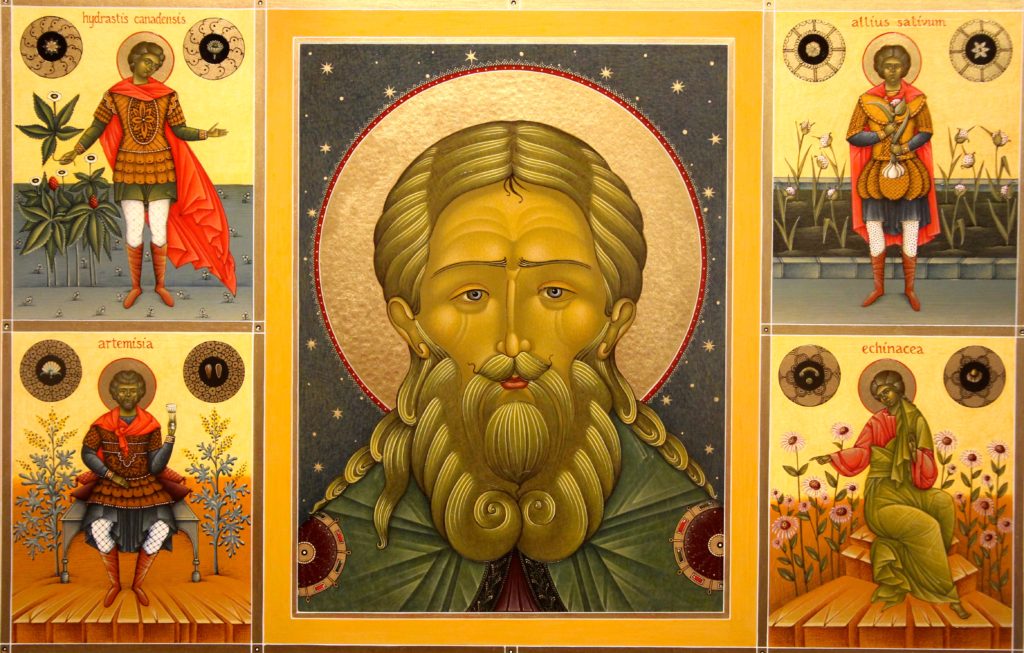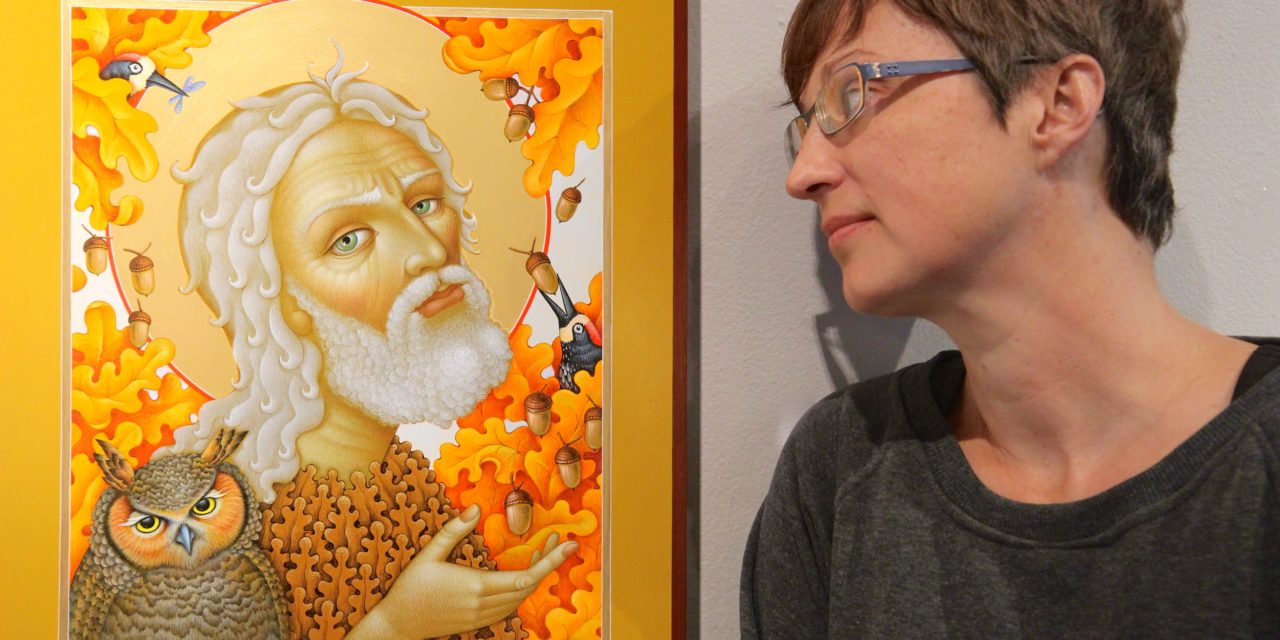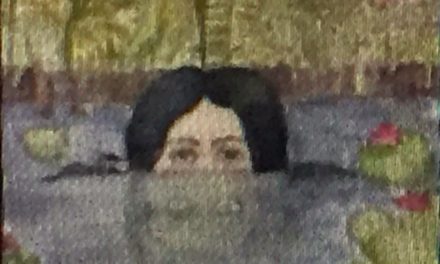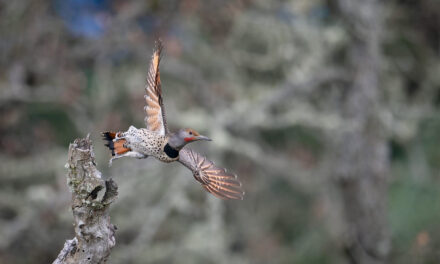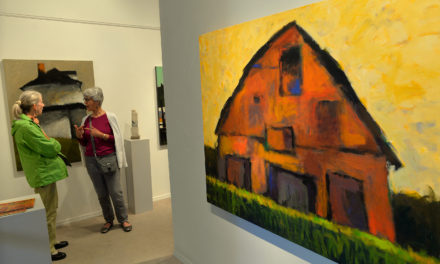(Above: Artist Olga Volchkova with one of her favorite saintly icons from a new series, Oregon Native Saints, representing plants native to Oregon rendered in Russian iconographic style; photos by Randi Bjornstad)
By Randi Bjornstad
“St. Oak” is one of Eugene artist Olga Volchkova’s favorite new saintly icons, part of a show called Oregon Native Saints, on display at the Karin Clarke Gallery in downtown Eugene.
“The white oak is part of our native ecosystem here, and it is almost gone,” Volchkova said. “Native Americans used to burn the grass savannah every year in order to collect camas bulbs that were important in their diet, and the oaks would be the only trees that didn’t burn and continued to thrive.”
The white oaks also had the distinction of being host to 500 species of caterpillars, she said, providing the primary diet for hundreds of bird species in the Willamette Valley.
“By comparison, the gingko tree is not native to Oregon, and it supports only five species of caterpillars, and that does not help many species of birds,” Volchkova said. “The oak to me feels like a very old, very wise man, which is why I created him as an icon.”
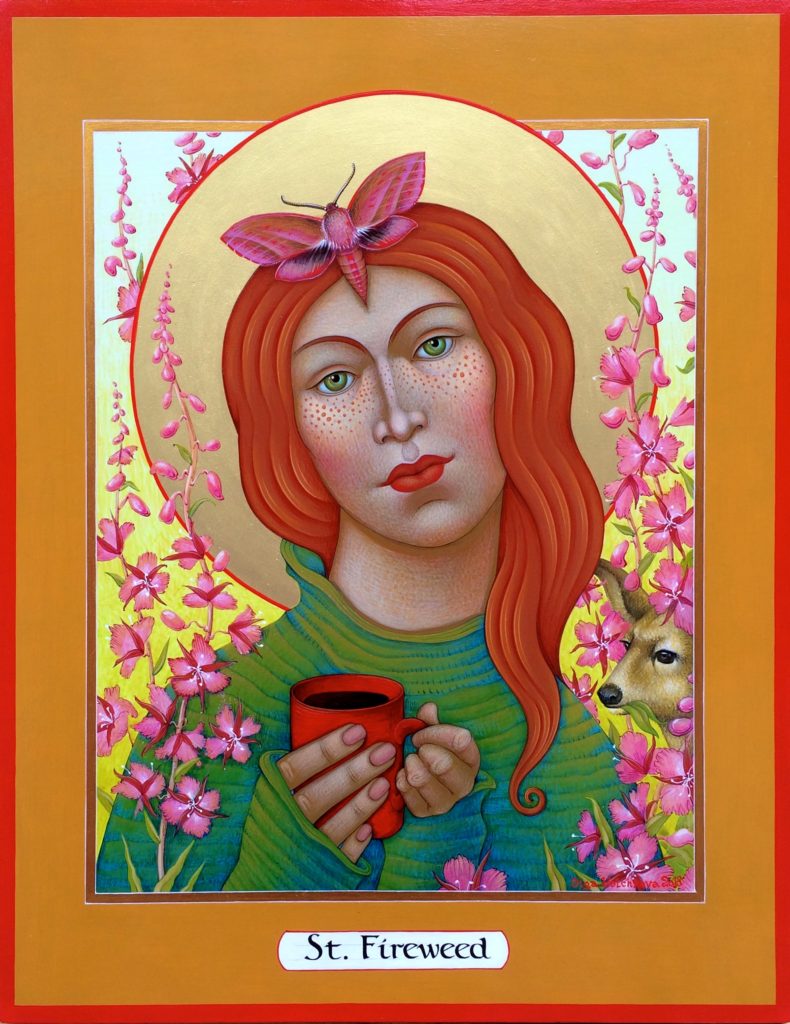
Her new show includes 10 paintings done especially for this exhibit — including saints Salmonberry, Fireweed, Beargrass, Rhododendron, even Belladonna and Cannabis — and each represents the same level of study that went into creating St. Oak.
She chose Saint Fireweed “because it is one of the common native plants in Oregon.”
“It’s called fireweed because it is one of the first plants that reappears after a fire,” she said. “Beargrass is another, and it appears in higher elevations than the valley floor. These plants have root systems that are not destroyed by fire, and another important thing about them is that the whole plant is edible.”
Fireweed also is native to Russia, where Volchkova was born and where she remembers drinking fireweed tea.
“It is very high in vitamin C, and the new shoots taste like asparagus,” she recalled. “Deer and other animals also eat it — it supports a lot of species.”
In creating her St. Fireweed, Volchkova pictured the saint as a woman with bright red hair and freckles. St. Camassia Quamash is portrayed as a stately, black-haired Native American woman with traditional braided hair and a beaded necklace, surrounded by purple star-like camas blossoms. St. Rhododendron is modeled on a real woman born in Oregon “who lives on a huge property outside Eugene and has wild rhododendrons growing everywhere and is so into nature,” the artist said.
She realizes that including an icon called St. Cannabis in the show might generate some controversy, but she has a ready explanation for including it, primarily because hemp and marijuana both are parts of the same family of plants known as cannabis.
“To me, it’s an issue of a plant being considered illegal, which seems a bit weird,” Volchkova said. “Cannabis as a plant group is not primarily for making yourself high — it’s a plant that is historically very useful for making things like fabric, sails, and rope.”
She also realizes that some people might think it sacrilegious to paint icons of personalities that are not officially designated religious saints.
“I think in Russia it might be a common opinion that I shouldn’t do this, Volchkova acknowledged. “But I think I am honoring nature, so I do not think it is a problem. I try not to even think about that possible complaint — I feel no guilt.”
At the same time, there’s no doubt that her Russian origins have influenced Volchkova’s affinity for icon painting. The art form began there in the 10th century and usually focused on portraits of Jesus Christ, his mother St. Mary, and many other saints and angels.
Volchkova makes her own gesso — a chalky white paint mixture often used to coat wood before painting — by cooking gelatin, chalk, garlic juice, and honey “to prevent bacteria from growing on it,” she said.
“It’s actually very cheap to make — it’s part of my training,” Volchkova said. “I make about 10 quarts at a time, which doesn’t last more than about a week, so I have to work as much as possible, sometimes 10 to 12 hours a day.”
She uses acrylic paints and then goes back over the finished surfaces and applies tiny scratches to add texture and depth to her work.
“Sometimes I have the TV on in another room when I’m painting, and I find that I recognize a lot of voices but don’t know what any of the people look like,” she said.
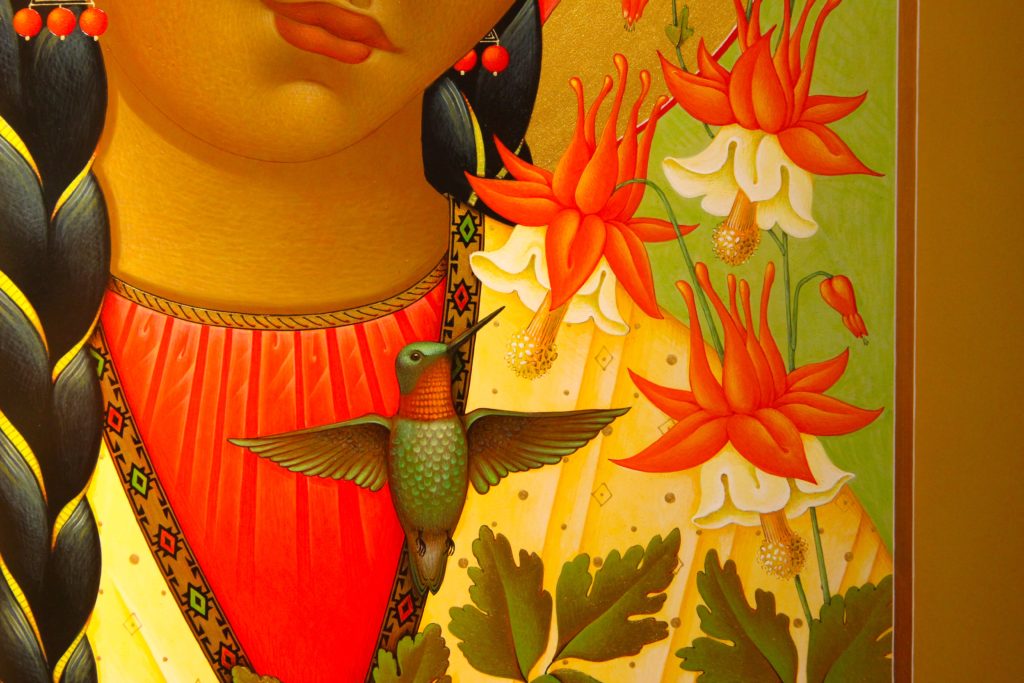
For her, painting is a calming activity. “If I don’t paint for awhile, I get anxious,” she said. “When I get stressed out and start working on a painting, after about three hours I’m all calm.”
The show of Volchkova’s icons at the Karin Clarke Gallery has been a long time in the making, Clarke said.
“I had a couple of her paintings on the wall once when I was doing a show of my mom’s (Margaret Coe) work,” she said. “She told me then about this new series that she was planning to do, and I knew I definitely wanted to show it.
“Her work is amazing.”
Oregon Native Saints
When: Through April 27; artist Olga Volchkova will give an artist talk at 6 p.m. during the opening reception from 5:30 p.m. to 7:30 p.m. on Friday, April 5 during downtown Eugene’s First Friday ArtWalk
Where: Karin Clarke Gallery, 760 Willamette St., Eugene
Gallery hours: Noon to 5:30 p.m. Wednesday through Friday, 10 a.m. to 5 p.m. Saturday
Information: 541-684-7963 or karinclarkegallery.com
